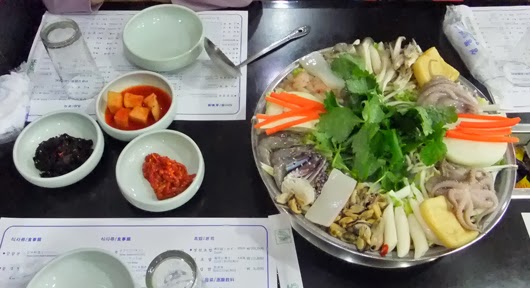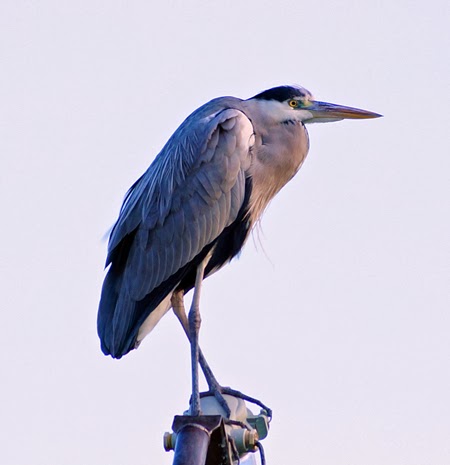< fig.1,
Varjrapani(Shitukongoushin):
Hokkedo D, Todai temple, Nara period, the 8th century, clay,
national treasure >
I introduced the typical things of various Japanese Buddha
statues in installments.
This times, I chose from the Deva (Tenbu) that was the guardian
deity of Buddhism.
The kinds of the Buddha statue are innumerable, but it are
classed in 5 groups, Tathagata(Nyorai), Bodhisattva(Bosatsu), Wisdom King, Deva, high priest.
Tathagata and
Bodhisattva who are main Buddha statues were already introduced.
The Deva (Tenbu) means the ancient Indian gods that took
refuge in the Buddha for protecting the Buddhism.
Although the appearance of Buddha statues had been written
in the sacred books that were created in India, it was ambiguous.
Therefore
sculptor specializing in Buddha statues would create them by responding to the
demand of the times along with relying on the tradition.
Because
Mahayana Buddhism continued being a state religion in Japan, the Buddha statue
expression that began with foreign imitation developed independently from the
original style
Those Buddha statues became godly or daunting statues, and
realistic or surprising images and then became diversified.
数回に分けて、日本の多様な仏像から代表的なものを紹介します。
今回は、守護神である天部から選びました。
仏像の種類は無数だが、如来、菩薩、明王、天部、羅漢・十大弟子・高僧の5種類に別れる。
中心的な仏像である如来と菩薩は既に紹介しました。
天部は仏教を護るために帰依した古代インドの神々を指します。
仏像はインドで生まれた経典に出てくるが、その容姿は不明瞭です。
そこで仏師は伝統を生かしながらも時代の要望に合わせて創作することになる。
日本では大乗仏教が国教であり続けたので、外来の模倣から始まった仏像表現は独自に発展を遂げます。
それらの仏像はこうごうしい像から威圧するような像まで、また写実的なものから意表を突くものまで千変万化となった。
< fig.2, a bird's-eye view of Todai Temple in Nara:
the placement of each temple was described in it. >
This is the large Buddhist temple that was built in order
that the Emperor might protect the nation by Buddhism.
The foundation was the 8th century, but it was destroyed by
a fire in the war and a natural disaster several times.
これは天皇が仏教によって国を鎮護するために建造した大伽藍です。
創建は8世紀ですが、数度の天災と兵火によって破壊された。
< fig.3, the inside of Hokkedo D in Todai temple >
Daibutuden A: There is the Great Buddha of a famous national
treasure.
Kaidando B: There is Koumokuten(fig.6) of Four Heavenly
Kings.
Nandaimon C: There is Konngourikishi(fig.7).
Hokkedo D: there is a big bodhisattva of the principal image
in the center, and small Bodhisattvas at each side of it. Wisdom King and many
different varieties of Deva surround it. There is Shitukonngoushin (fig.1) and
Four Heavenly Kings in the Deva.
大仏殿A:有名な国宝の大仏(如来座像)がある。
戒壇堂B:四天王の広目天(図6)がある。
南大門C:金剛力士(図9)がある。
法華堂D:中央に本尊の千手観菩薩、その脇に日光・月光菩薩、さらに2体の金剛力士、外側に2体の四天王が見える。その奥に不動明王、地蔵菩薩、図1の執金剛神、梵天、帝釈天、四天王がある。菩薩と明王以外が天部です。
Four Heavenly Kings
This is arranged in four directions with one set surrounding
the principal image in the center of a hall.
These are guardian god of east, west, south, and north, and
consist of Jikokuten, Koumokuten, Zoucyouten, and Tamonten.
Those statues put on armor of China style, are trampling a
devil, three statues have weapon in the hand, and the body color is
distinguished by 4 colors.
四天王
これは堂内で本尊を中心に四方に4体一組で配される。
これらは東西南北を護る神で、持国天、広目天、増長天、多聞天からなる。
それらの姿は中国風の鎧を着け、邪鬼を踏みつけ、身色は四色で区別され、3体は手に武器をもっている。
< fig.4, from left, Jikokuten, Zoucyouten >
< fig.5, from left, Koumokuten, Tamonten: Kaijyusen
temple, Kyoto, Kamakura period, wood, H.38cm, important cultural
properties >
This is considered to be faithful imitation of the Four
Heavenly Kings of the Daibutuden A in Todai temple that was burned once, as the
cutdown version.
これは創建時、東大寺大仏殿にあり焼失した四天王像の忠実な模造と考えられている(縮小版として、写真は手から武器が外されている)。
< fig.6, Koumokuten: Kaidando B, Todai temple, the
8th century, clay, H.160cm, national treasure >
Koumokuten has power to foresee the world and protects Buddhism
and people.
So, it is staring into the distance in sharp eyes, and it
has an ink brush and a scroll.
広目天はこの世を見通す力を持ち、仏教と人々を護る。
それゆえ、この像は鋭い眼光で睨み、筆と巻物を持っている。
< fig.7, Jikokuten: To temple, Kyoto, Heian period,
the 9th century, wood, H.190cm, national treasure >
This plays the role supporting a nation and has weapons in
both hands.
これは国を支える役割を担い、両手に武器を持つ。
< fig.8, Bishamonten: Shizuoka, Kamakura period,
the 12th century, wood, H.150cm, important cultural properties >
Later, only Bishamonten(Tamonten) was believed as the god of
the military prowess or the amulet, by military commander and people.
This is an early statue of Unkei who was a sculptor specializing in
Buddha statues.
He proposed new direction unlike the raging face of a
traditional expression.
It was originated in Kubera god that was the lord of wealth
and the regent of the north in Hindu mythology.
毘沙門天(多聞天)は武勇や魔除けの神として、後に単独で武将や民衆に広く信仰された。
これは運慶の初期の作品で、開かれたばかりの鎌倉幕府の命で作ったものです。
彼は、それまでの憤怒相とは異なる新機軸を打ち出している。
もともとはインド神話の財宝と北方を守護する神クベーラに由来する。
Kongorikishi( Nio )
When a matched
pair of statues stands at both sides of the gate of a temple, most of it is Kongorikishi.
This god beats the enemy with a powerful weapon and crushes
even the worldly desires of the believer.
金剛力士(仁王)
お寺の門の両側でにらみを効かしている左右二体の像はほとんどが金剛力士です。
これは強力な武器を持って、敵を打ち破り、信者の煩悩さえも粉砕する神です。
< fig.9, Agyo statue of Kongorikishi: NandaimonC, Kamakura period, the 13th
century, wood, H.840cm, national treasure >
This is a statue that Unkei reproduced after it had been
burned.
Its dynamism increases in comparison with Shitukongoushin(fig.1)
in Hokkedo D.
これは運慶が焼失した東大寺の仏像制作を総指揮した時の作品です。
もともと法華堂の図1の執金剛神に見られるように憤怒相、筋骨隆々とした姿で表されていたのですが、さらにその迫力は増しています。





































